This article by Dr Matt Pye* recently appeared in the Australian Flora Foundation’s January 2019 Research Matters and is reproduced with permission.
Introduction
Gardens are an important part of our existence in urban environments. They provide relief from the concrete and bricks that create the artificial environment that most Australians now inhabit – the urban landscape. Our gardens provide shelter and shade, a potential kaleidoscope of colour and, in many backyards, a small localised food source in the form of vegetable gardens. In cities, gardens and street trees also provide additional cooling mechanisms to the heat sinks of concrete structures.
Despite their ubiquitous presence, Australian backyard gardens have evolved over time and are far from static entities. The traditional English Gardens that were first established, presumably to trigger memories of the Mother Country, have morphed into a hybrid design which often includes representatives from the Australian flora. More recently, there has been a sustained trend towards preferentially planting native Australian species, deemed to be a better or more ‘natural’ alternative to the exotic imported species of the past. Many of these garden plants have gone on to achieve fame as invasive weed species. However, does the mere incorporation of native plants into one’s garden warrant a horticultural ‘pat on the back’? Do native plants actually do anything other than make us feel some misguided source of ‘Aussie pride’? Can we actually increase the functionality of our backyards into something truly beneficial – for both our gardens and surrounding native ecosystems?
The use of Australian native plants
The dominance of native plants in many Australian horticultural contexts suggests that the practice of including indigenous flora in our backyard plant assemblages has long been established. However, it was only through the periodical ‘Growing Native Plants’ published by the Canberra Botanic Gardens (now known as the Australian National Botanic Gardens) in the 1970s and early 1980s that any information was available on the topic of how to grow native plants. These booklets were published once a year for 14 years. The publication of ‘Australian Native Plants’ by John Wrigley and Murray Fagg in 1979 and the ‘Encyclopaedia of Australian Plants’ by Rodger Elliot and David Jones in the 1980s resulted in less demand for the booklets and the series was discontinued.
Nevertheless, the (native) seed had been planted. Australian native plants are now part of the Australian horticulture consciousness. Today, seeds and seedlings of many native species, along with established shrubs and trees, can be readily purchased from commercial suppliers (e.g. a well-known hardware chain lists the availability of 114 native species for sale as of September 2018).
There is also a substantial presence of Australian natives in the cut flower industry with many florists choosing to utilise the dramatic foliage and long-lived nature of many Australian species (e.g. flowers from Banskia spp., foliage from Eucalyptus spp.).
Growing natives is now a serious scientific, evidence-based business. For example, research on germination strategies of many members of the Australian flora has led to the inclusion of ‘smoke water’ when buying native seeds. Evolving in concert with fire, much of the Australian flora have developed a dependency on smoke, or rather the chemicals found in the smoke from bushfires. In an evolutionary sense this strategy assures the best prospects for germination and establishment in natural settings.
A preference for Australian native plants
This may explain how Australian native plants became available but how and why did they initially become the preferred selection for the informed gardener? Why does the use of native plants persist despite the reputation of being “scraggly”, “untidy” and “difficult to grow” in an urban garden context? The answer possibly lies in a similar domain to Dick Smith and Aussie Mite – stay with me here.
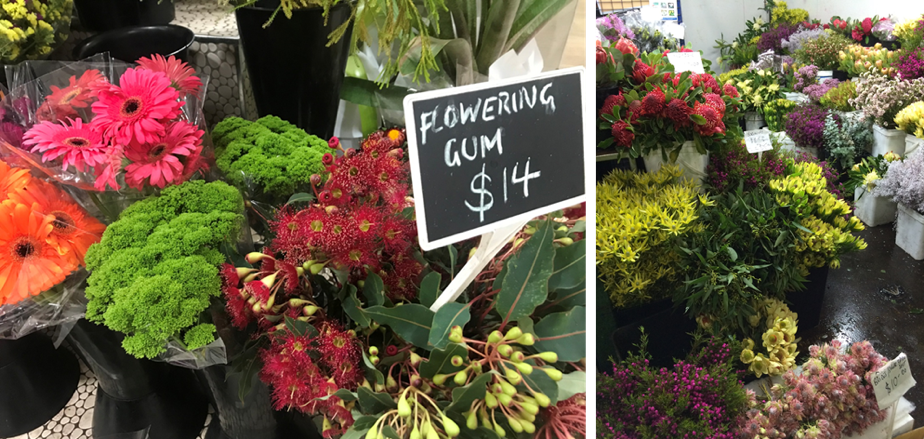
In 1986, 3 years after Australia raised its profile on the international stage beginning with the America Cup win, and just after the first publications about Australian plants became available, the Australian Made logo was launched – an initiative to support locally-grown produce and locally-made products. Launched by Prime Minister Bob Hawke, this campaign strengthened Australian nationalism and pride for our Country was at an all-time high. Consumers are likely to have been making conscious choices about supporting Australian products, including the selection of plants for their backyards. The link to the backyard garden and the plants surrounding the ubiquitous Hills Hoist may well have been established right then and there in the suburban consciousness. The choice to incorporate more “Aussieness” in backyards and other local spaces would have been simple. Native plants offered a bold statement, given their differing and distinctive morphology and colour palette compared to more traditionally preferred species.
So, at this point in time, we began to incorporate native flora into everyday Australian life. A research study conducted in 2010 in the Melbourne metropolitan area, showed that 60% of gardens contained a mix of native and non-native species but only 10% of gardens contained mostly Australian native plants. Evidence can also be seen in street plantings which are generally species that local councils deem to be “non-offensive” in terms of fruit production and branch drop. An inquiry to local Sydney City Council governance was illumining in this respect. The selection of dry-fruited species is always promoted over any fleshy-fruited species due to trip hazards, “mess” and other undesirable features. Plants in the genera Melaleuca and Waterhousea seem to be favourites in the Sydney landscape. Do we therefore have an assemblage bias in urban landscapes by promoting one species over another in our streets?
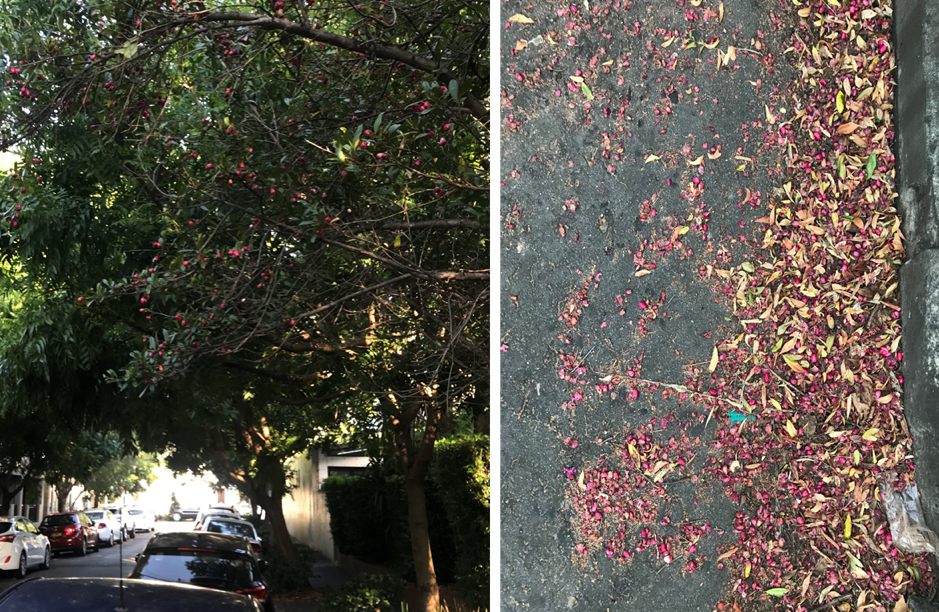
The potential horticultural bias can be further explored using the Gondwanan family, Myrtaceae. This family contains a fleshy-fruited group and a dry-fruited group, historically described as the subfamilies Myrtoideae and Leptospermoideae (Note: current molecular studies do not support this taxonomy, with fleshy-fruits appearing to evolve independently at least twice in the family, rendering Myrtoideae polyphyletic). In theory, that would mean we should only see approximately half of the diversity of this iconic Australian plant family in our urban landscapes. This means we would see more species in the genera Eucalyptus, Corymbia and Angophora than we would of Syzygium. However, the ‘widow maker’ status (i.e. tendency to drop large branches) of the Eucalyptus/Corymbia/Angophora group adds complexity and has probably resulted in fewer street plantings that we would otherwise see, except in some rare exceptions. Public safety is paramount and trumps any effort to restore our urban environments to their former plant community structure.
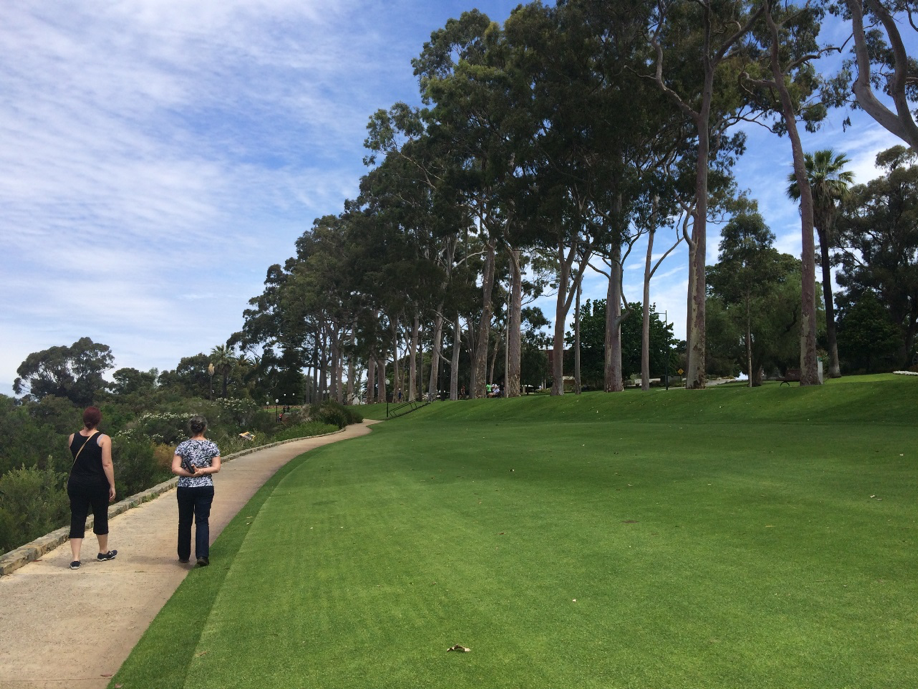
The role of native plants in urban environments
An example I can draw from personal connection is the Bunya Pine, Araucaria bidwillii – a majestic Australian conifer which is almost demonised when planted in urban areas. I spent a good few years thinking about little else while studying this species for my PhD. This magnificent tree, one deeply embedded within Indigenous knowledge along the eastern seaboard of Australia, has long suffered the reputation of being the bad guy. “Attack of the Killer cones” is a frequently encountered headline for this species due to the production of female cones which can weigh up to 20 kg each. Some basic physics calculations shows that they have the potential to kill or at least do some serious damage to a person. Most commonly they damage property such as parked cars, so they generally are roped off and given a wide berth during their coning period, as if they were some infectious entity worth avoiding at all costs. In reality, they mostly drop their cones at night, thereby avoiding the humans who are seen as the target of their reproductive strategies.
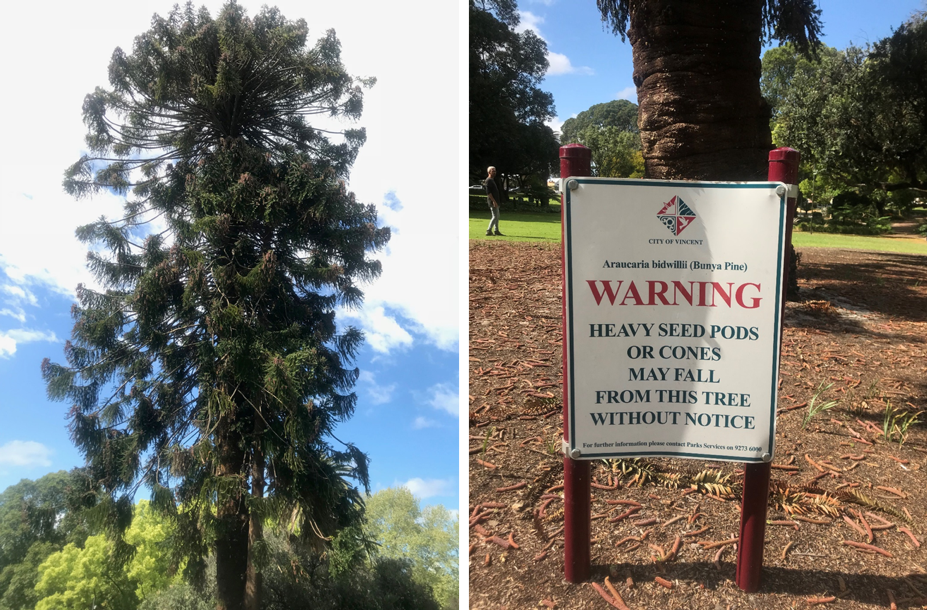
What benefit other than an aesthetic one could Bunya Pines possibly provide? Urban specimens in Brisbane are at least 100 km from their nearest population in the Bunya Mountains and nearby Noosa Hinterland, and 1000 km away from their northern population counterparts at Cannabullen Falls and Mount Lewis in Far North Queensland. I suggest that these urban plantings offer little to biodiversity as they are too far away to reproduce with their naturally-occurring conspecifics. If, however, they were planted closer to their forebears the potential benefits to the genetic diversity of the species, and biodiversity itself, could be massive and ongoing.
The question here is what function do we want our gardens and urban landscapes to serve? Do we merely want an aesthetic reprieve from the concrete and bricks (similar to the initial colonised gardening practices of re-creating the English garden), or is there a deeper function that we could tap into whilst also retaining their visual benefit?
The deeper function that I am referring to here is the maintenance of gene flow within the Australian landscape – between our urban landscapes and the natural vegetation that these islands of concrete are situated within. Gene flow refers to the movement of genetic material (e.g. seeds, pollen) from one population to another. When gene flow rates are high, two geographically distinct populations may be considered to be one as they share a significant proportion of genetic diversity. Low gene flow can lead to speciation events (i.e. the creation of distinct species) as random mutations and/or selection for certain traits driven by environmental and/or other factors create two distinct genetic populations. Eventually these distinct populations may become different enough that the two populations can no longer interbreed – leading to the creation of two new species.
I believe that our goal, as an environmentally-conscious society, should be to decrease the manipulation of our natural environments as much as possible, and, ideally, to minimise our genetic impact on these environments. The question for our society is, do we want isolated urban vegetation pockets containing a mishmash of aesthetic, non-messy plant species (native or otherwise) or do we have an ethical responsibility to reconnect these urban landscapes to the vegetation and surrounding habitats that they have replaced?
Climate change, and all of the environmental uncertainties that it brings, adds more support to the planting of locally-occurring species – plants of local provenance. On one hand we have the question of the capability of garden species to withstand local environmental conditions and fluctuations, and on the other we have the water demands of those species alongside any need for fertilisers and other inputs. If plant species are sourced from the native vegetation that surrounds our urban fragments, then they are more likely to be locally adapted, in an evolutionary sense, to available nutrient and water regimes. This is a win/win situation in terms of reducing added nutrient loads to soil and any runoff that may occur, while also minimising the use of additional water to keep gardens alive. Such a garden would have zero net needs – the perfect environmental model for a climatically uncertain world.
We need only look to the history of the colonisation of Australia for a chilling lesson – one which we are yet to fully adopt and one which I echo in the sentiments of this article. Upon arriving in Sydney, the First Fleet established a food garden at Farm Cove where the Royal Botanic Garden Sydney is now situated. A lack of understanding of the differences in soil types, climatic regimes and local pest species proved to be a significant barrier to the establishment of core crops:
“Very little of the English wheat had vegetated and a very considerable quantity of the barley and many seeds had rotten in the ground … all the barley and wheat likewise destroyed by the weevil”.
28 September 1788, Governor Phillip reporting to Lord Sydney.
It was the use of Warrigal Greens (Tetragonia tetragonioides) that saved the first settlers and helped them avoid scurvy, a common condition resulting from diets low in Vitamin C. It would appear that over 200 years later we have learned little of the importance of planting local species that are adapted to local conditions.
Australian plants for nationalist pride? We can do better than that
While the presence of Kangaroo Paws (Anizoganthos spp.) in Sydney may make us well up with nationalistic pride and perhaps fond memories of the incredibly diverse flora of Western Australia, they do little to contribute to gene flow along the eastern seaboard. Their contribution is quite definitely confined to the aesthetic.
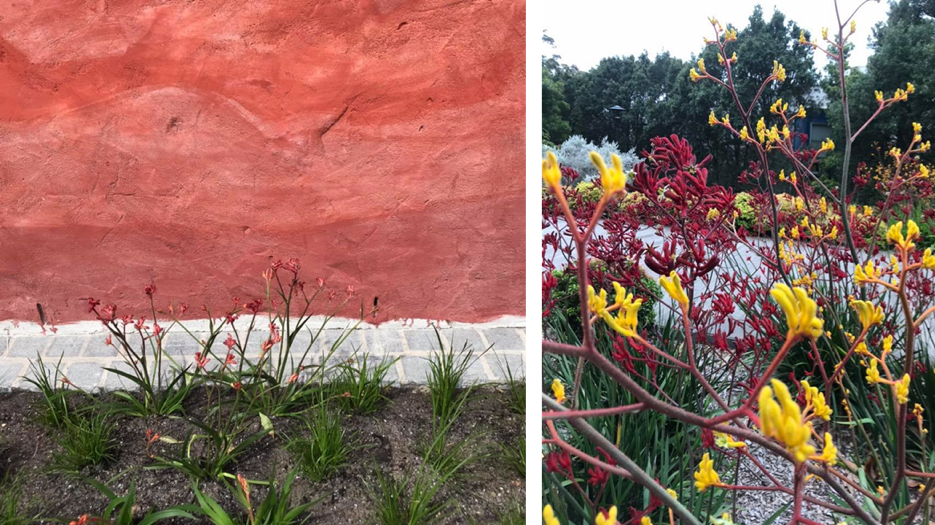
I am not arguing against the use of native flora in our gardens and streets. I am, however, ardently pointing out that we could do better with what we have – plant what is adapted to local environments and, where possible, use local council nurseries to source plants and/or seeds of local provenance. We can still plant native plants, with all of their “scraggly” beauty, while also doing our bit for remediation of habitats. Such plants will attract pollinators (another win for the zoologically-inclined) that then pollinate neighbouring plants within the surrounding vegetation. Gene flow in action. Our backyards will be connected to the bush and each planting will increase exponentially in its utility – albeit on a timescale that may not be evident in a human lifespan. Rest assured, your contribution to biodiversity will be imprinted in the genetic makeup of these populations for years to come.
*About the author
Dr Matt Pye is an Academic Fellow in the School of Life and Environmental Sciences, at the University of Sydney. He has an interest in plant systematics and investigates the impacts of historical fragmentation on genetic diversity within and among plant populations.
